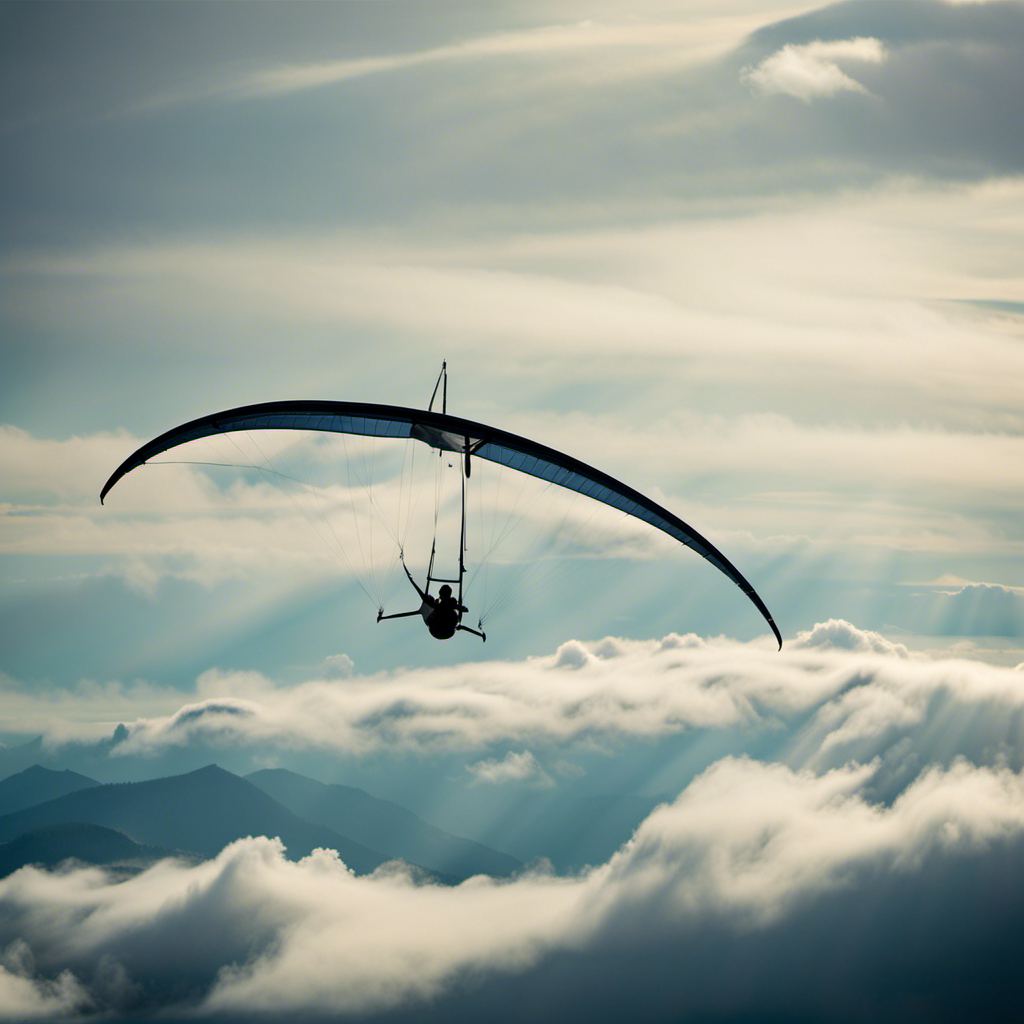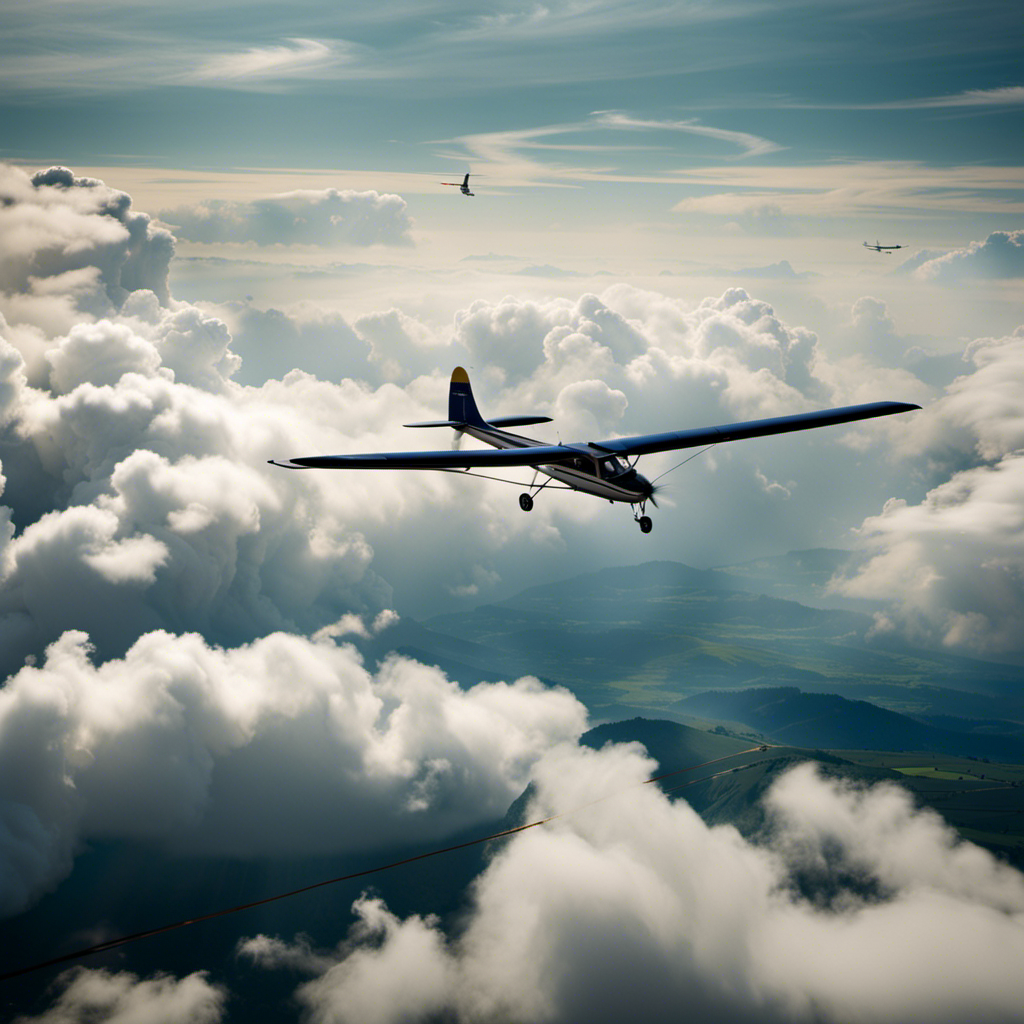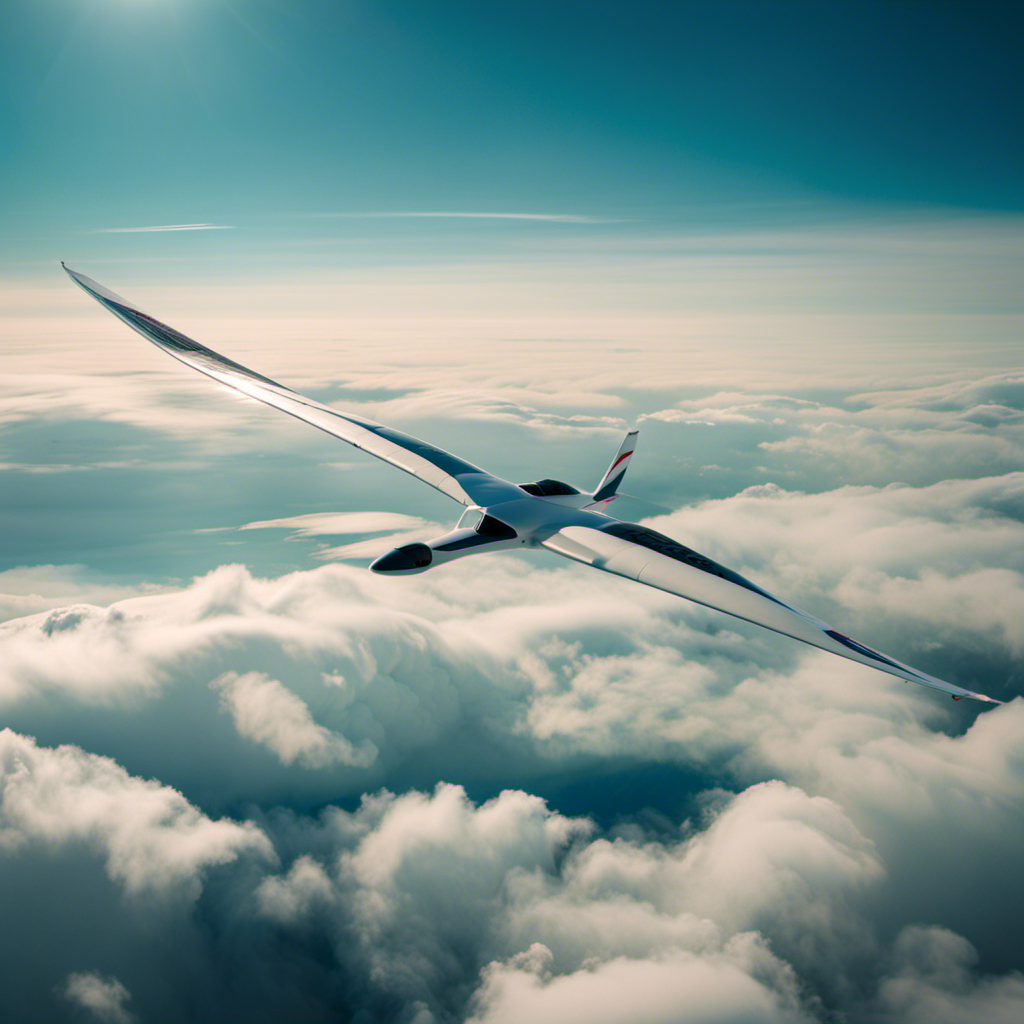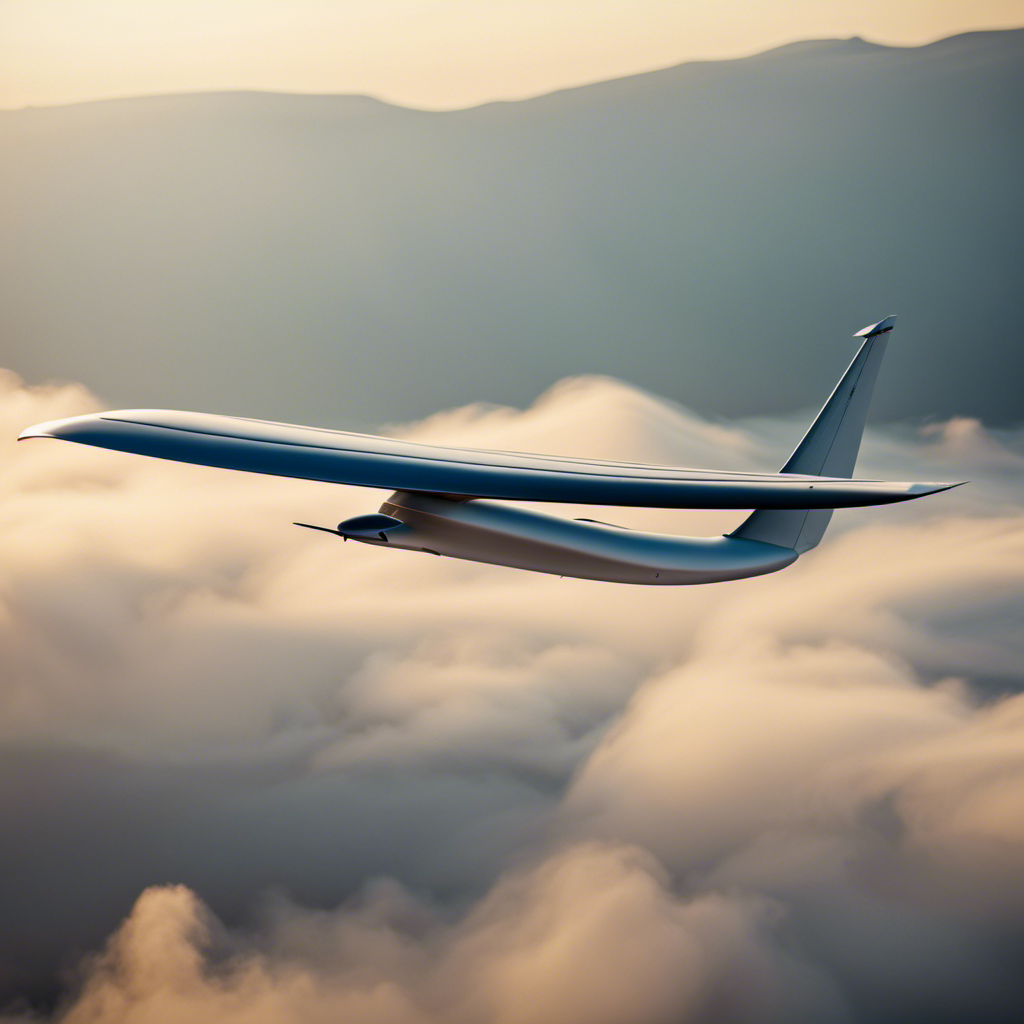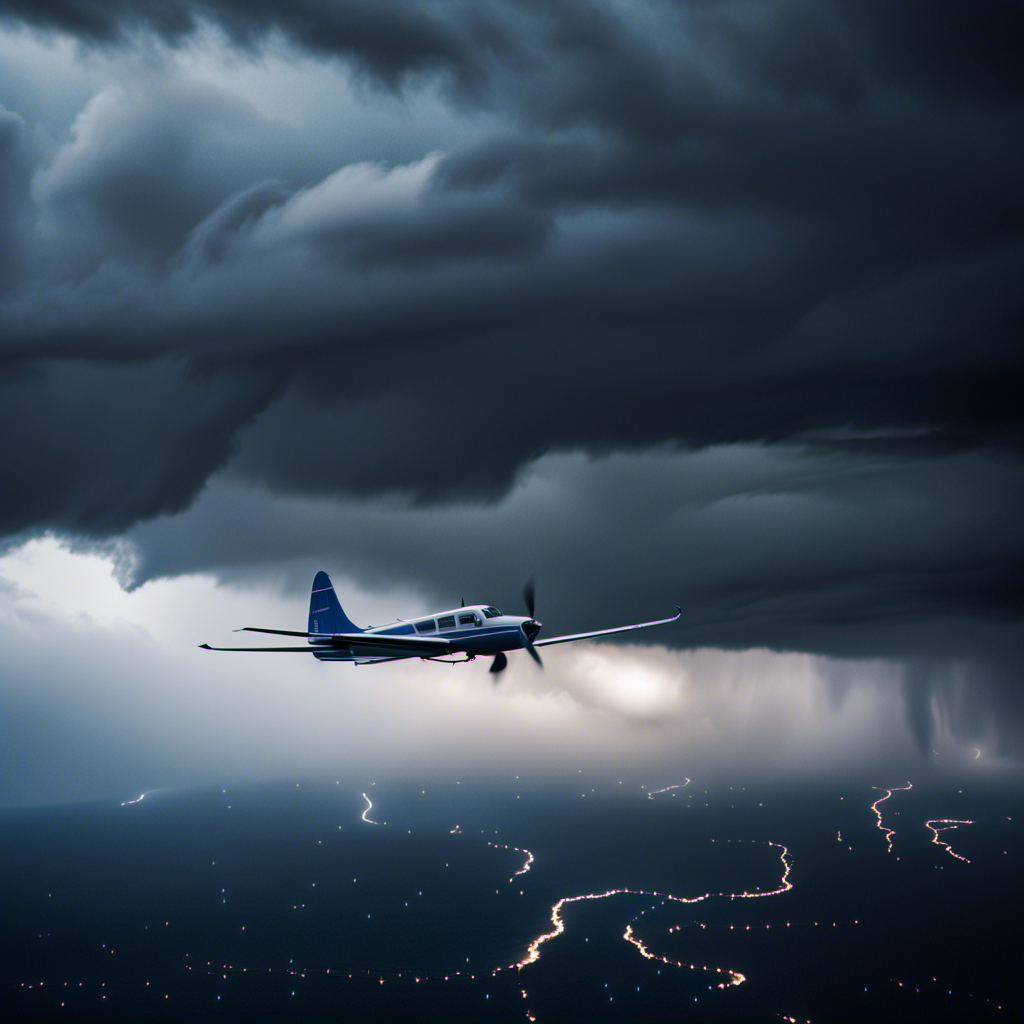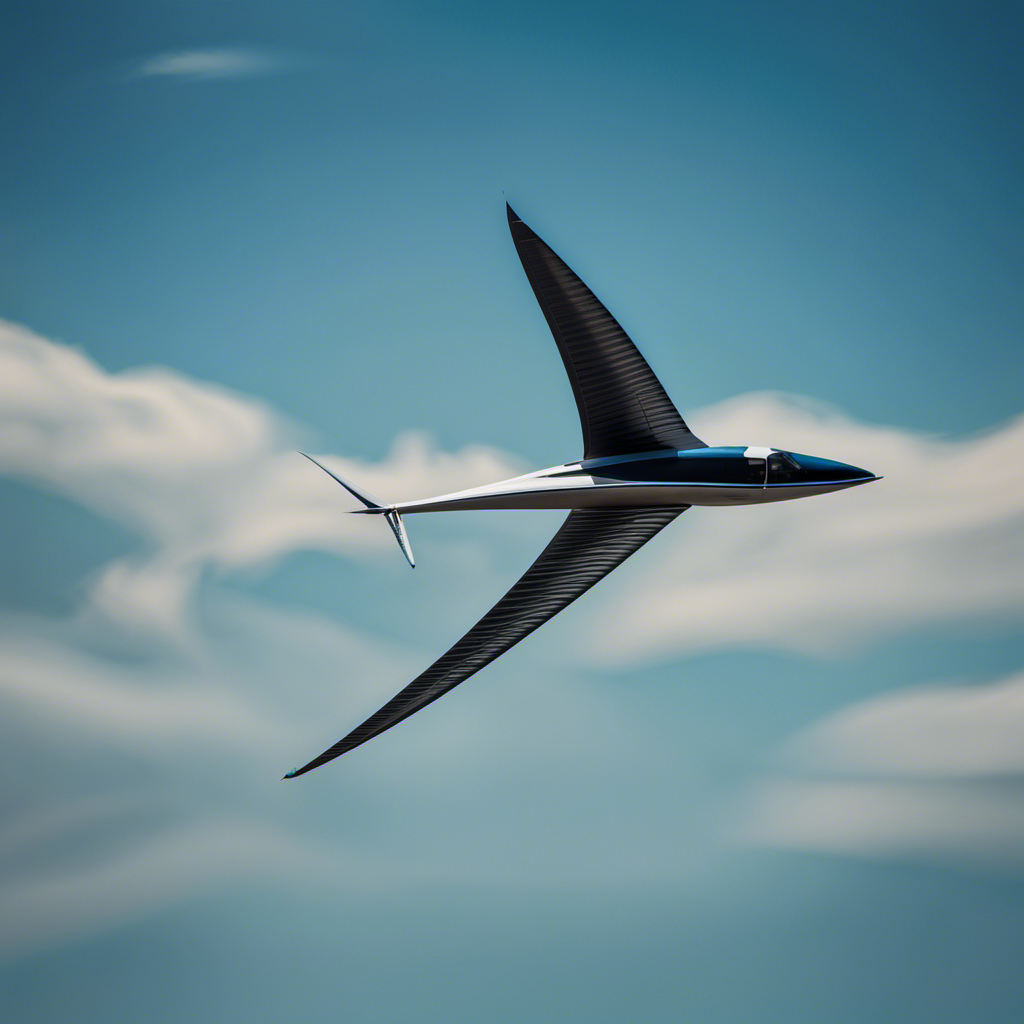I have always been fascinated by the incredible ability of hang gliders to stay airborne for long periods. It truly is a marvel of engineering and physics principles. The key is to harness the power of lift while minimizing drag.
By understanding the principles of flight and carefully designing their gliders, pilots are able to achieve remarkable glide ratios. In this article, we’ll explore the history, construction, and techniques used by hang gliders to stay aloft for extended periods of time.
Key Takeaways
- Hang gliders can stay in the air for hours by maintaining optimal lift and flight techniques.
- Utilizing thermals and ridge lift is crucial for prolonged flight.
- Safety measures and regular equipment maintenance are essential for safe flying.
- Developing skills and selecting appropriate equipment contribute to enjoyable and successful hang gliding adventures.
History and Evolution of Hang Gliders
Hang gliders have come a long way since their early beginnings in the 1800s. The history of competitions and famous hang glider pilots showcases the evolution of this exhilarating sport.
Competitions have been held around the world, pushing the limits of hang gliding and inspiring pilots to achieve new heights. From pioneering individuals like Otto Lilienthal and Francis Rogallo to modern-day legends like Manfred Ruhmer and Jonny Durand, these pilots have been instrumental in shaping the sport and pushing the boundaries of what is possible.
With advancements in materials, design, and technology, hang gliders have become more efficient and aerodynamic. The ongoing pursuit of longer flight durations has also led to breakthroughs in understanding the physics of flight, including lift, drag, and glide ratio, which will be explored in the next section.
The Physics of Flight: Lift, Drag, and Glide Ratio
To maximize your flight time, you’ll want to understand how lift, drag, and glide ratio work in the physics of flight. Here are five key points to consider:
-
Aerodynamics and the Bernoulli Principle: Lift is generated by the difference in air pressure above and below the wing. The Bernoulli Principle explains how the airspeed and shape of the wing affect lift.
-
Wing design: Hang gliders have wings with a curved upper surface and a flatter lower surface, which helps create lift.
-
Angle of attack: The angle at which the wing meets the airflow affects both lift and drag. Adjusting the angle of attack can optimize the performance of the glider.
-
Weight and balance: The distribution of weight in the hang glider affects its stability and maneuverability. Proper weight distribution is crucial for maintaining lift.
-
Drag reduction techniques: Hang gliders incorporate various features like streamlined wingtips and aerodynamic control bars to minimize drag and increase glide ratio.
Understanding these principles and factors is vital for achieving longer flight times.
Now, let’s delve into the intriguing world of hang glider design and construction.
Design and Construction of Hang Gliders
You’ll be amazed by the intricate process involved in building a hang glider that allows you to soar through the skies with ease.
The design and construction of hang gliders require careful consideration of various factors, including hang glider materials and aerodynamics principles.
Hang gliders are typically made from lightweight materials such as aluminum alloy or carbon fiber to ensure optimum strength-to-weight ratio. These materials are chosen for their ability to withstand the stresses of flight while keeping the overall weight of the hang glider low.
The shape of the hang glider is also crucial in achieving maximum lift and minimizing drag. The wings are designed with a curved shape, called an airfoil, which generates lift as air passes over it. The wingspan and aspect ratio of the hang glider also play a vital role in its performance.
By incorporating these design elements and harnessing the principles of aerodynamics, hang gliders are able to stay in the air for hours.
Now, let’s delve into the importance of weight and balance in maximizing hang glider performance.
Importance of Weight and Balance
In order to maximize your hang glider’s performance, it’s important to carefully consider the weight and balance of the aircraft. Weight distribution plays a crucial role in determining the stability and maneuverability of the glider.
The center of gravity, which is the point where the weight is evenly distributed, must be precisely located to ensure optimal flight characteristics. A well-balanced hang glider allows for smooth control inputs and efficient gliding.
The weight of the pilot, equipment, and any additional ballast should be distributed evenly across the glider’s structure. This ensures that the center of gravity remains in the desired position, allowing the glider to maintain stability and respond predictably to control inputs.
Launching Techniques: Running, Towing, and Aerotowing
Launching a hang glider can be done using various techniques, such as running, towing, or aerotowing.
The running technique is one of the most common and straightforward methods. To execute this technique, the pilot sprints down a slope or hill while holding onto the control bar. As the glider gains speed, the pilot’s feet lift off the ground, and the glider takes flight.
Safety precautions are crucial during this process. First, it is essential to check the wind direction and speed before attempting a launch. Additionally, the pilot must ensure that the glider is in proper working condition and that all equipment is securely fastened.
Understanding Wind and Weather Conditions
When understanding wind and weather conditions, it’s important to assess the direction and speed of the wind before attempting to fly. Understanding wind patterns and predicting wind changes are crucial for safe and successful hang gliding. To help you visualize the importance of wind direction and speed, here is a table summarizing the different wind conditions and their effects on hang gliding:
| Wind Direction | Wind Speed | Effect on Hang Gliding |
|---|---|---|
| Headwind | High | Increases lift and allows for longer flights |
| Tailwind | High | Decreases lift and requires more skill to maintain altitude |
| Crosswind | Moderate | Requires adjustments in flight path to maintain control |
| Updrafts | Variable | Provides additional lift and can be used for soaring |
| Downdrafts | Variable | Reduces lift and can be dangerous if not managed properly |
Understanding these wind patterns and being able to predict wind changes is essential for hang gliding. It sets the foundation for the techniques used to maintain altitude and soar, which we will explore in the next section. By mastering these skills, hang gliders can stay in the air for hours, harnessing the power of the wind to glide through the sky.
Techniques for Maintaining Altitude and Soaring
By mastering these skills, hang gliders can harness the power of the wind to maintain altitude and soar for extended periods. Maintaining airspeed is crucial in staying airborne. To do this, hang glider pilots use weight shift techniques.
By shifting their body weight, they can control the angle of attack of the glider, which affects the lift generated. By leaning forward, the pilot increases airspeed, while leaning back slows it down. These subtle weight shifts allow the pilot to adjust and maintain the desired speed for optimal lift.
Once the hang glider achieves the desired airspeed, the pilot can then focus on utilizing thermals and ridge lift for extended flight, which will be discussed in the next section.
Utilizing Thermals and Ridge Lift for Extended Flight
Once the hang glider achieves the desired airspeed, I can then focus on utilizing thermals and ridge lift for extended flight, which allows me to stay airborne for hours.
Thermals are columns of rising warm air that can be found over land or water. They are created by the uneven heating of the Earth’s surface, and can provide significant lift for the hang glider.
Ridge lift, on the other hand, is created when the wind blows against a ridge or mountain slope. As the air is forced upwards, it generates lift for the hang glider.
By strategically maneuvering and exploiting these natural sources of lift, I can maximize my flight time and cover great distances.
However, it is important to be aware of safety measures and emergency procedures to ensure a safe and enjoyable flight.
Safety Measures and Emergency Procedures
To ensure a safe and enjoyable flight, it is important to be familiar with necessary safety measures and emergency procedures. Hang gliding can be an exhilarating experience, but being prepared for potential emergencies is crucial. One important aspect of hang gliding safety is knowing how to perform an emergency landing. This involves identifying suitable landing areas, such as open fields or clearings, and practicing landing techniques to minimize the risk of injury.
Regular equipment maintenance is also essential to ensure the proper functioning of your hang glider. This includes regular inspections, repairs, and replacements of worn-out components. By staying on top of equipment maintenance, you can prevent any equipment malfunctions during flight.
By following these safety measures and staying on top of equipment maintenance, you can enjoy your hang gliding adventures with peace of mind.
Now, let’s explore some tips for becoming a skilled hang glider pilot.
Tips for Becoming a Skilled Hang Glider Pilot
Learning the proper techniques and practicing regularly are essential steps in becoming a skilled hang glider pilot. Hang gliding competitions require a high level of skill, precision, and knowledge of the sport.
To excel in these competitions, pilots need to master advanced flying maneuvers, such as thermaling, ridge soaring, and speed control. Additionally, selecting the right hang gliding equipment is crucial for optimal performance. Pilots must consider factors such as wing size, weight, and aerodynamics to ensure stability and maneuverability during flights. It is also important to choose safety equipment, such as a helmet and a reserve parachute, to mitigate risks.
Frequently Asked Questions
What is the average cost of purchasing a hang glider?
The average cost of purchasing a hang glider can vary depending on the brand, features, and materials used. It typically ranges from $2,000 to $5,000 for a basic model, while advanced models can cost upwards of $10,000.
How long does it typically take to learn how to hang glide?
It typically takes an average of 10-20 hours to learn how to hang glide. Learning involves mastering basic hang gliding techniques such as launching, controlling the glider, and landing safely.
Are there any age restrictions for learning and participating in hang gliding?
Age restrictions for hang gliding vary by location, but generally, participants must be at least 16 years old. Safety precautions, such as proper training, equipment checks, and weather assessments, are crucial for a safe and enjoyable experience.
Can hang gliders be used for long-distance flights or cross-country travel?
Hang gliders can be used for long-distance flights and cross-country travel due to their long distance endurance. They are often used in hang gliding competitions, where pilots navigate through various thermal currents to stay aloft for extended periods of time.
Are there any health or physical requirements for participating in hang gliding?
Health requirements for hang gliding include a good cardiovascular system, no history of heart conditions, and physical fitness. Physical requirements include strength, coordination, and the ability to run and lift heavy equipment.
Conclusion
In conclusion, hang gliders are able to stay in the air for hours due to a combination of factors.
The design and construction of hang gliders, along with the physics of flight, play a crucial role in achieving prolonged flight times.
By utilizing thermals and ridge lift, skilled hang glider pilots can maintain altitude and soar for extended periods.
It is interesting to note that the average flight time for experienced hang glider pilots is around 2-3 hours, demonstrating their ability to harness the power of the wind and stay airborne for an impressive duration.
With a heart that soars as high as the skies, Aria, affectionately known as “Skylark,” is the driving force behind Soaring Skyways. Her journey into the gliding world began as a young dreamer gazing up at the soaring birds, yearning to experience the weightlessness and freedom they embodied. With years of experience both in the cockpit and behind the scenes, Aria’s commitment to the gliding community is unwavering.
